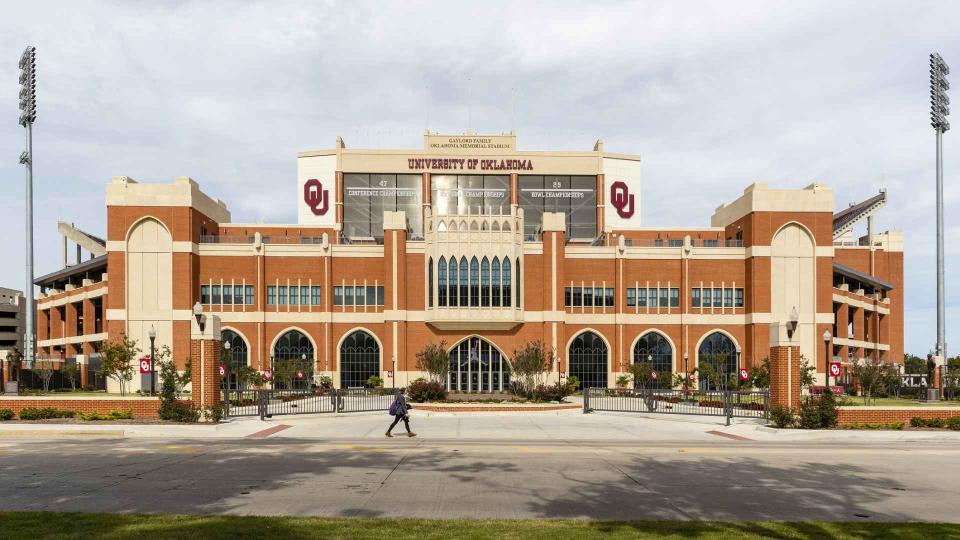Student loans have become a pain point for millions of Americans over the past few years. Rising inflation along with pandemic job losses and out-of-control food prices have led to more constrained household budgets. In fact, CNN highlighted that families are spending $709 more per month than two years ago as a result of inflation.
See: Biden Cancels Another $9 Billion in Debt — Is Yours Among the $127 Billion Forgiven So Far?
Find: New Student Loan Forgiveness Rule Simplifies Process — Who Qualifies?
The pandemic student loan pause produced a sigh of relief from many, but that has now come to an end. Student loan payments are resuming and colleges are continuing to spend money at some of the highest levels on record. The nation’s best public colleges have been on an unchecked spending spree for years now, per The Wall Street Journal. New academic buildings, new dorms, new sports programs and new staff are where much of your student loan money is being spent.
How Colleges Are Spending Student Loan Money
The Wall Street Journal reported that the University of Oklahoma recently increased its tuition rates significantly while spending millions of dollars on projects such as acquiring and renovating a $14.3 million 32,000-square-foot Italian monastery in Arezzo, Italy, to house the school’s new study abroad program.
To add, The University of Kentucky upgraded its campus at an astounding rate of $805,000 a day for more than a decade. Freshman attendees at this school, who come from one of America’s poorest states, paid an average of $18,693 to attend in the 2021-22 academic year.
“Students do not have the resources right now to continue to foot the bill for all of the things that the university wants to do. You can’t just continue to raise revenue by turning to students,” said Crispin South, a 2023 Oklahoma graduate.
It’s indicated that at the median flagship university, spending increased 38% in the 20 years between 2002 and 2022. While it is the case that roughly three-fourths of states did reduce funding for public universities, universities have raised prices far beyond what was needed and have raised tuition to new heights as a result. These costs have been passed on to students, with many simply assuming a larger debt load to attend school.
Holden Thorp — who was chancellor at the University of North Carolina at Chapel Hill from 2008 to 2013 and is now editor-in-chief of “Science” — explained that “these places are just devouring money.” According to him, offering everything to everyone all at once is unsustainable. “Universities need to focus on what their true priorities are and what they were created to do.”
I’m a Self-Made Millionaire: Here Are 3 Things I Never Waste Money On
College Spending Is Higher Than Ever
Colleges and universities alike have not faced accountability for overspending since they aren’t required to track expenses. Meanwhile, Education Department data regarding college finances frequently contains mistakes that don’t match up to audited figures.
School spending growth was notably more aggressive between 2002 and 2012, with total operating expenses rising a median of 30%. Financial pressures of both the pandemic and the recession have caused some schools to begin to pull back on spending somewhat. With national attention and protests around crippling student loan debt, many colleges have also slowed the rate at which they increased tuition. Nonetheless, spending has still climbed overall. At the median university, total operating expenses rose nearly 10% from 2012 to 2022.
Colleges Are Vying For Students
In a world where more young people are questioning the importance of and trying to justify the cost of a 4-year college degree, colleges are loading up on new amenities. These include new dorms and state-of-the-art recreation centers to attract students with the highest test scores and subsequently, those with the least need for financial aid.
The result? An increased tuition price is passed on to all students, including baked-in fees students pay to cover items such as construction debt. In other words, to attract smart, more well-off students, college overspending is increasing education costs for all — including those who need the most financial help. These practices have created inequity among students.
This is exemplified by tuition and fee revenue per student climbing by double digits in the past 20 years at every school, according to WSJ’s analysis. The average student paid more because many schools not only raised tuition prices but also increased the percentage of higher-paying students attending from out of state.
More oversight from the Department of Education may be necessary to keep tuition costs in check, critics argue, and perhaps guidelines may be introduced to determine what sorts of spending are permissible when a college decides to spend federal student loan funds.
More From GOBankingRates
This article originally appeared on GOBankingRates.com: Academic Spending Spree: How Colleges Spend the Money You Pay In Student Loans
Credit: Source link




